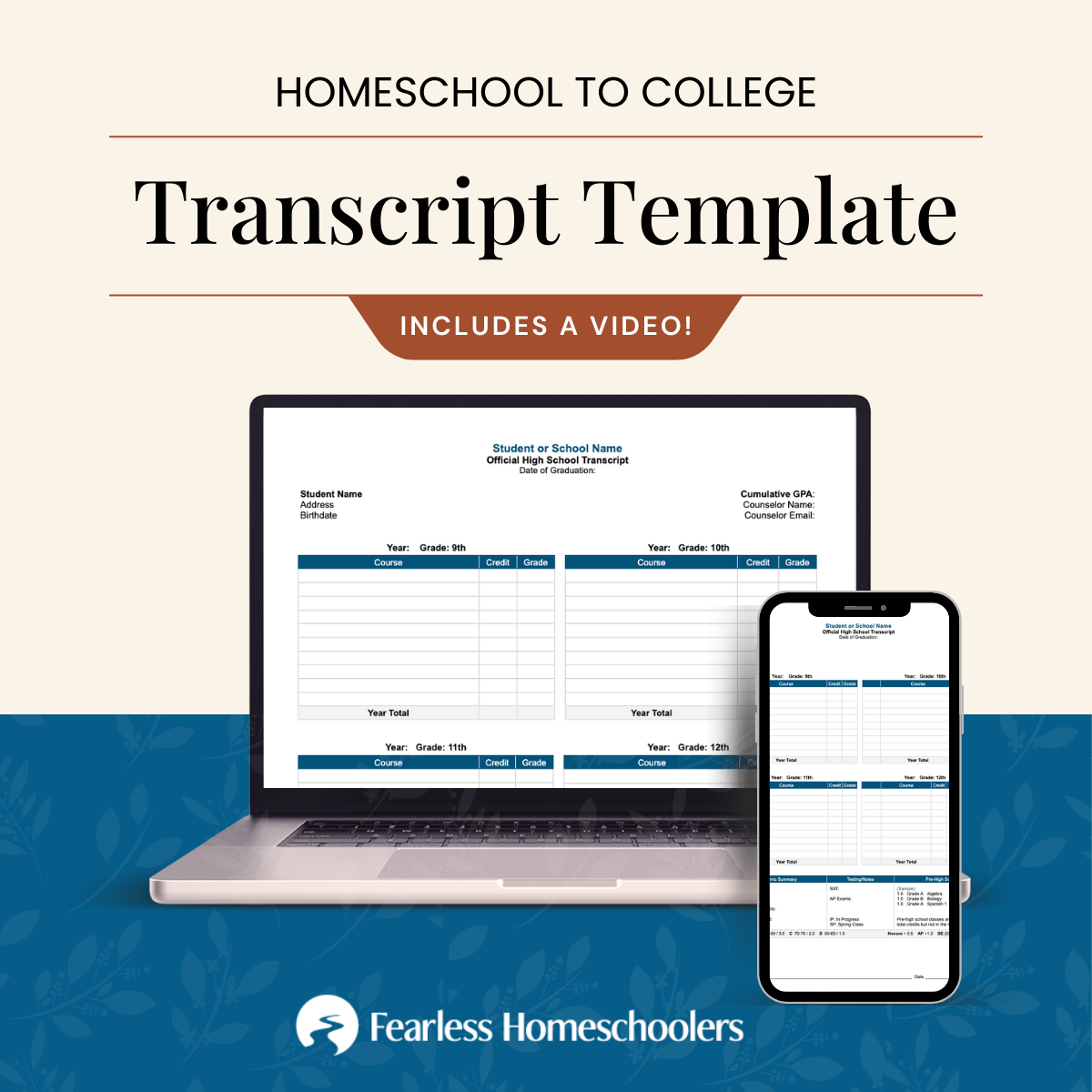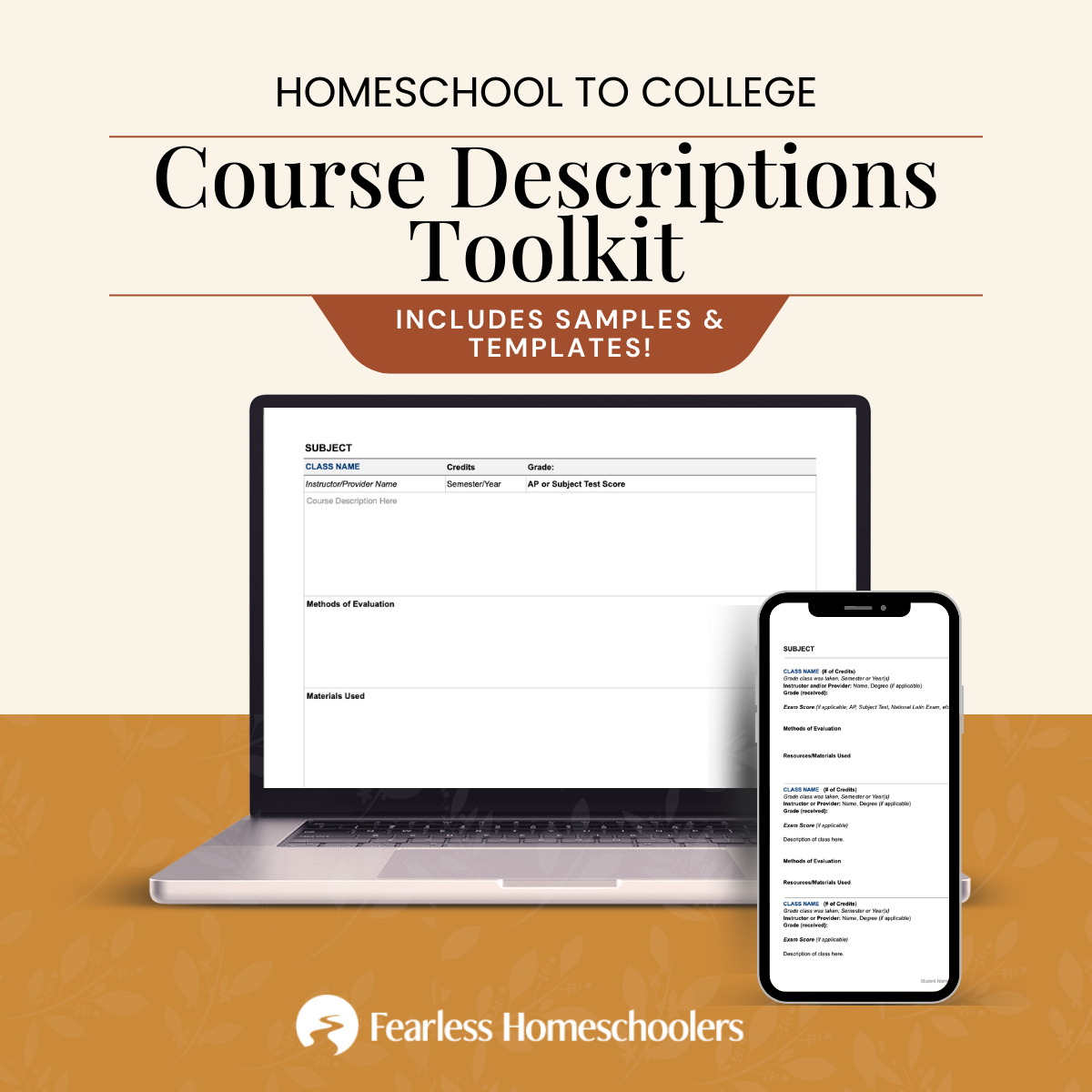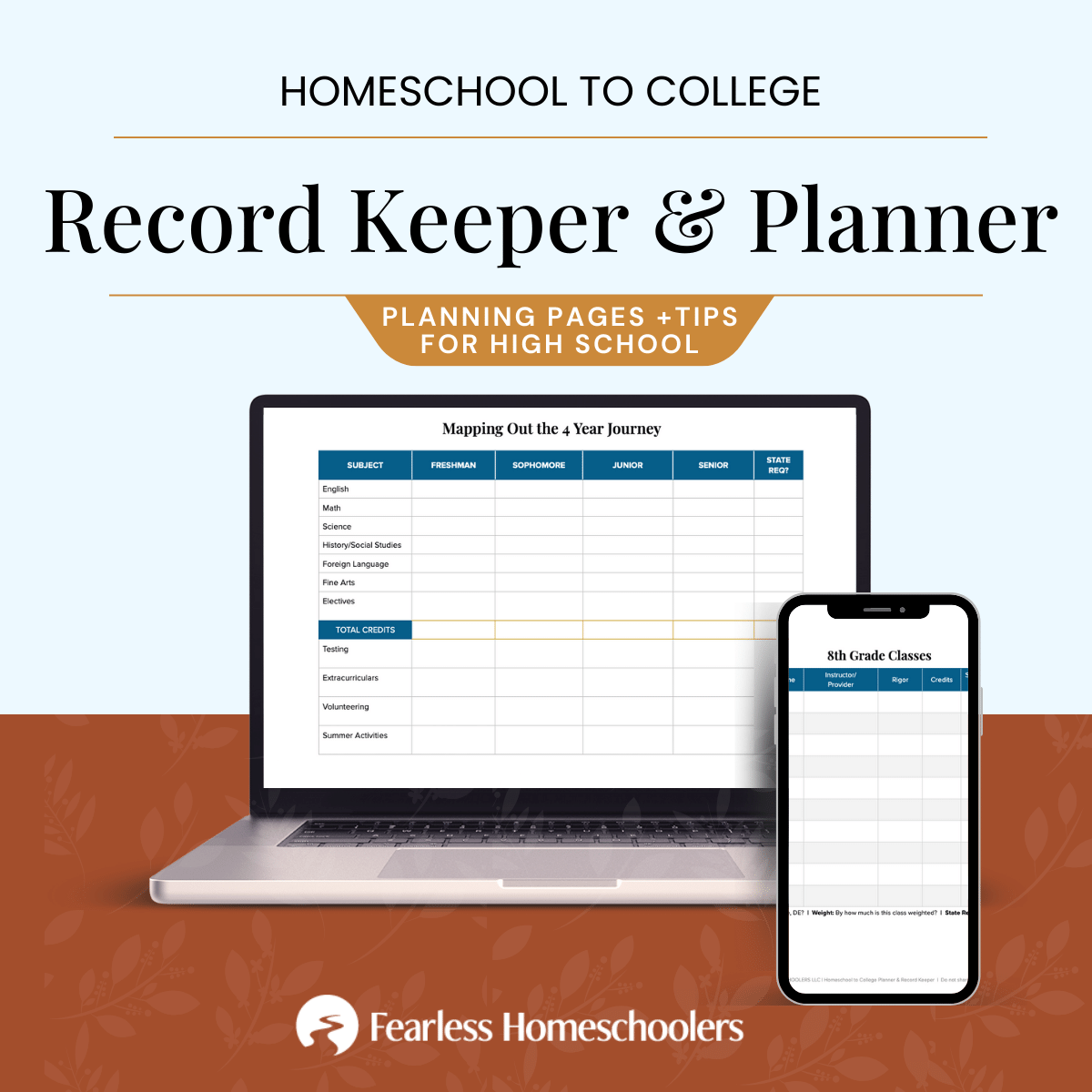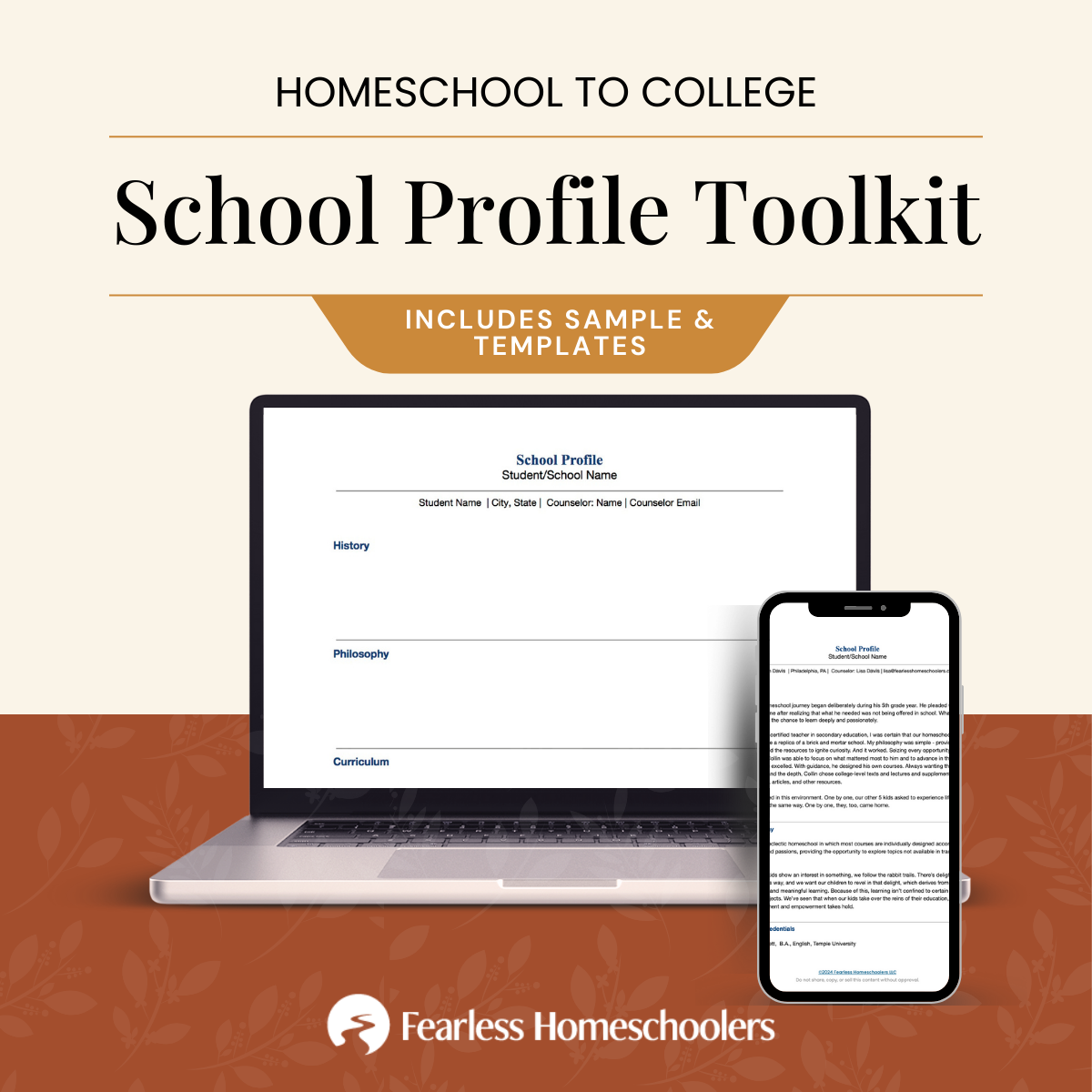Homeschool Credits for High School: The Ultimate Guide
Recently, I took out Aunt Irma’s recipe for arroz con gandules. Ask anyone in the Cardona family and they’ll say hers is the best. It’s got that something special that Aunt Liz or Aunt Lucy simply cannot match. Is it the cilantro? The sofrito? The sazon?
I look down and chuckle. I remember the day she wrote down the ingredients on the now stained and torn Longaberger recipe card. I forced her to give me some exact measurements so I’d have an idea, a place to start when making my own version of rice with pigeon peas.
When you begin homeschooling high school, you’re looking for the same sort of thing, am I right? A place to start, a framework. Without it, you just feel like you’re shooting in the dark.
I’m going to share that framework with you. And your first steps are going to be planning your high school credits.

Homeschool High School Credits & What You Should Know
- How many credits are needed to graduate
- What determines a credit and how to calculate them in the gpa
- Where in the transcript and school profile to mention credits
How Many Homeschool Credits Are Required to Graduate?
Do you tense up at the thought of balancing it all? That’s the biggest struggle for most homeschoolers. If you’re like most of us, you started homeschooling for its freedom and personalization. And now here you are… thinking about credits and grades and college requirements.
Let’s Start at the Beginning
When sitting down to create a 4 year homeschool high school plan, you need to consider these 3 things:
1. State Requirements
2. College Requirements
3. Your Own Requirements
State Requirements for Homeschoolers
Each state has a different set of graduation requirements for homeschoolers. Some have absolutely none. Look carefully at your state’s Department of Education website for HOMESCHOOLER’s requirements.
CAUTION: Don’t look at your state’s requirements for public school students! You’re not required to fulfill those. Sure, you can if you’d like, but sometimes states require subjects that you won’t find necessary.
Below are the requirements from my state of Pennsylvania.
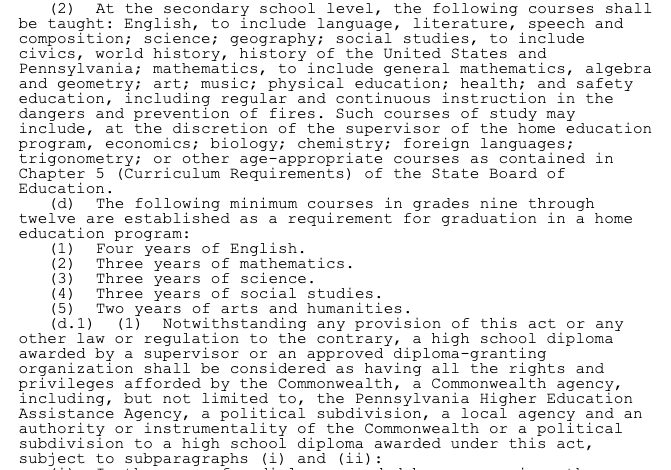
And just a heads up. If you’re from the states of California, Nebraska, New Jersey, Idaho, or Indiana, your state uses a credit value higher than most. In California and Nebraska, for example, one year long class is worth 10.0 credits.
As a homeschooler, you can stick to your state’s credit value or convert it to the more typical 1.0 credit value. Either way is fine; just be consistent. Remember to translate each course using the same credit value.
College Requirements for Homeschoolers
Often a university recommends a particular high school schedule, listing credits and courses, for its applicants. Some schools even have a special page designated for homeschool applicants. Look at both and weigh their requirements into your high school planning.
Check out what Lawrence University requires of homeschoolers.
CAUTION: Don’t go crazy trying to research every requirement for every school. You’ll go bonkers.
Instead, think of the KIND of college your homeschooler might be applying to. You know I’ll always recommend my 4x5 Plan (4 years of the 5 core academic subjects) when it comes to planning high school, but here’s the homeschool credit chart from my Homeschool to College Planner to use as a reference for planning a regular college prep schedule or a rigorous one.
Credit Chart for a College Prep Homeschool
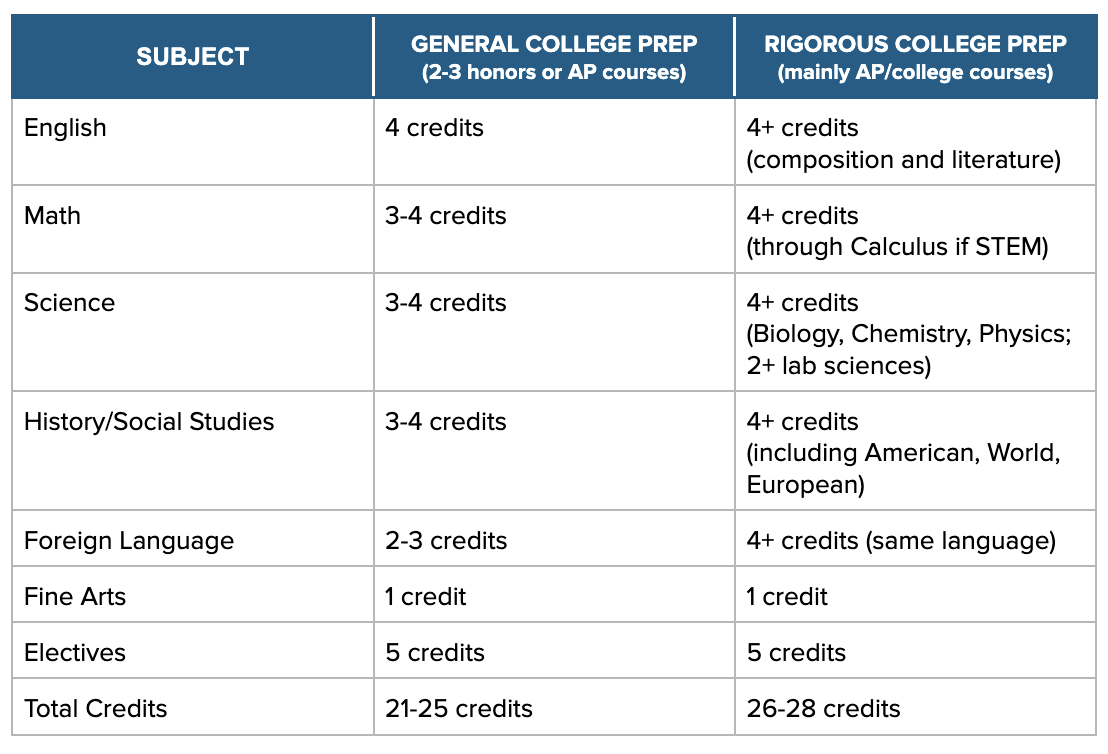
Insider Tip: If you head to a college’s website and look at their “high school course recommendations,” please know this. To be a competitive applicant at certain schools or to be a top contender for merit aid, your teen will need more than their recommendations.
Take for instance Northwestern University. Here’s what they recommend:

Northwestern’s 2021 acceptance rate was 6.8%. You can be sure that their accepted students didn’t just meet the recommended credits - they exceeded them. By a lot.
So keep that in mind as you plan your 4 years and create your list of colleges.
👉 Get Started With a Homeschool Transcript Template HERE!
Your Own Requirements
Now is the time to think about why you’re homeschooling high school in the first place. And now is the time to invite your homeschooler into the conversation. This is, after all, their education, their future.
Each of you may have your own set of have-to’s or want-to’s before graduation. What are they?
Have a heart to heart about what and why each of you is carving out certain requirements.
Total Number of Credits
So is there an ideal amount of total credits for graduation? Can you have too many?
The average number of total high school credits for college prep students is generally between 21-28 credits. The more rigorous the prep, the more credits one tends to have.
Think carefully before going above 35 credits for a 4 year high school. That assumes an almost 9 hour school day, and that begins to feel excessive, especially if you’re claiming to have a lot of extracurriculars.
Remember, you don’t need to show every single thing. Instead, exclude credits that don’t add value or ask yourself if any of those credits should instead be on the activity list.
Balancing It All
The trickiest part is balancing it all while planning for the unknown.
My advice? Do your best. Map out your 4 year high school plan early. Revisit it each year, responding to your teen’s emotional and academic needs. Always be ready to pivot if necessary.
What Exactly Is Considered a High School Credit?
A credit is a unit used to measure the completion of a subject studied by a student. Most high schools calculate a year long class as 1.0 credit and a semester class as 0.5 credit.
For homeschoolers, though, calculating a credit gets a little muddy.
What if it’s a self-designed course? What if it’s a community college course? What if it’s a course that was short and intense or stretched out over a year?
Because of the flexibility you have as a homeschooler, use your best judgment as you make credit decisions. And stay consistent as you move through the high school years.
Calculating Homeschool High School Credit

To make life easy, let’s take a look at the best ways to determine credits:
1. Time
The Carnegie Unit is the most common unit used by high schools. It’s based on the amount of instructional time spent on a subject. One credit equals around 150 hours a year or 36 weeks of 50 min sessions per day per subject. This does not include “homework.”
If using the Carnegie Unit:
1.0 Credit = 150-180 hours or an hour long class 5x a week for 36 weeks
0.5 Credit = 75-90 hours or an hour long class 5x a week for 18 weeks.
AP Courses or Labs generally require a lot more hours than 150. Even so, students still earn 1.0 credit for that class. Colleges will note the rigor by the course name and/or the weighting you give it.
2. Textbook
Is your homeschooler making their way through a high school level (or higher) textbook for a core academic subject? That’s the easiest of all. Assign 1.0 credit if that text and its assigned work have been at least 80% completed.
3. Provider
If your teen is using an online provider or private tutor, they should be able to tell you how many credits their class is worth. If not, use the time or textbook approach.
4. Dual Enrollment or College Classes
Most college level classes are between 3.0 and 5.0 college credits. But for your homeschooler? They’re worth 1.0 high school credit.
3.0-5.0 college credit class = 1.0 high school credit
1.0-2.0 college Credit Class = 0.5 high school credit
5. Mastery
Many homeschoolers choose to study a subject until mastery is achieved. This is a classic and perfectly acceptable way to assign credit as a homeschooler.
High School Credit for Electives
Calculating your homeschool electives is done in much of the same way as their core academic classes.
What’s different, however, is which electives to count for your homeschool transcript and which you should not.
Some homeschoolers feel the need to overshare on the transcript - filling it with driver’s ed and cooking and every extracurricular club or class they’ve taken.
Be careful here. Colleges don’t want to see every single thing your homeschooler has done. Yes, they’d like to see some interesting electives, but there’s no need to pad a transcript with an extra 20 credits of electives. Yes, I’ve seen this. Too many times to count.
Why does it look bad on a transcript?
Colleges are most interested in your academics. Having too many credits can come back to bite your homeschooler in a few ways:
- It distracts from their academics
- It plays into helicopter parent stigma
- It stands out from the crowd - in a negative way
How to share those interesting extracurriculars or interests?
The activities list on the Common App or other applications! And, even then, we don’t need to tell schools everything. We just want to highlight the best of what our teen has done.
Where to put credits on your homeschool documents
You know you’ll be calculating credits for your GPA, but where and how should you show them on your transcript and other documents?
On the Transcript
Calculate your credits in 3 ways for your Transcript:
- Total Semester Credits
- Total Yearly Credits
- Cumulative Credits
👉 Get Your Homeschool Transcript Template HERE!
In Your School Profile
Mention your credit system in 2 sections on your School Profile:
- Credits, Grading, and Weighting
- Graduation Requirements
In your Course Descriptions
The Course Descriptions I create with families who use my one on one service include the amount of credits that each class is worth following the course name. I consider the course descriptions to be a detailed version of the transcript, so I include things like credits, grades, and AP test scores.
Yes, Colleges Will Accept Your Homeschool Credits
Many worry that admissions officers won’t take their homeschooler’s application seriously. They will. I promise you. Especially when you take your application seriously.
Admissions officers want to see three things in your documents:
- Clarity
- Constistency
- Credibility
Use every opportunity you can to be transparent about the structure and methodology behind your homeschool. One way to do this is to share and explain your credit system in each document.
Conclusion
Use the details in this article as a framework and guide when you plan your homeschool high school credits, but remember to enjoy the flexibility that homeschooling has given you.
Aunt Irma’s recipe for arroz con gandules has evolved. I’ve created my own sofrito and my own sazon, turning her recipe into my own. I want you to do the same! Be fearless and creative as you move through the next four years. Listen to your teen. Watch them evolve into their own.
Want More on Transcripts?
- How to Create a Transcript That Colleges Will Love
- 3 Things Colleges Want to See on Your Homeschool Transcript
- How to Create a Homeschool Transcript for the Common App
Your Turn
What are you finding difficult to balance during the high school years?
